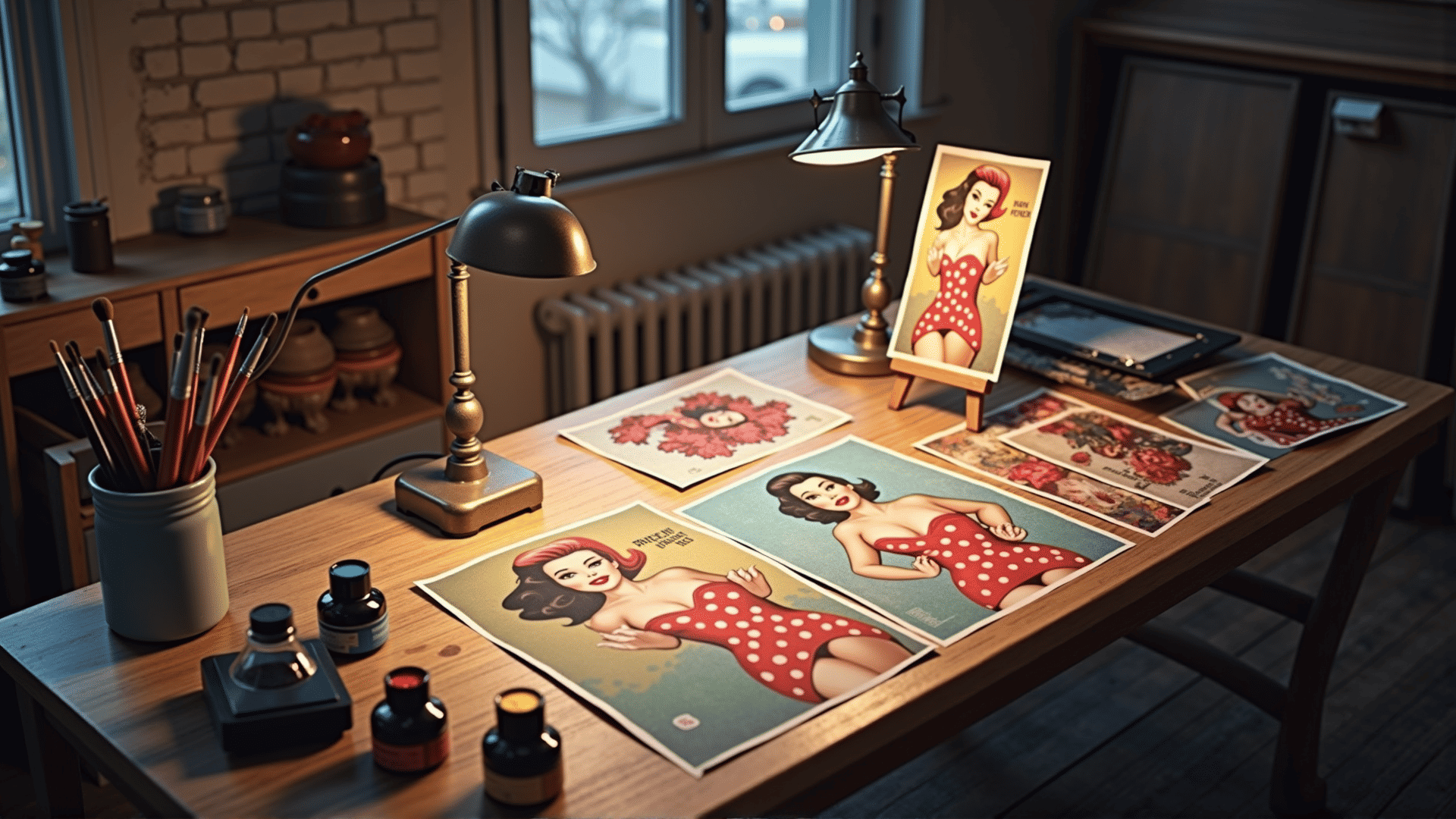Creating vintage posters is a delightful journey into the past, a dance of colors and styles that captures the essence of bygone eras. Vintage posters, with their bold typefaces, striking compositions, and evocative imagery, have always held a special charm and allure. Artists who wish to replicate these styles in their own artwork and illustrations must understand the techniques that made vintage posters timeless icons of design. Here, we delve into the fascinating world of vintage poster art, uncovering the techniques used by past masters and offering tips for creating your own nostalgic masterpieces.
Understanding the Elements of Vintage Posters
Before diving into specific techniques, it is crucial to understand what makes vintage posters unique. Typically, these works feature:
-
Bold Typography: Vintage posters often use distinctive, striking typefaces that were popular during their particular era. These fonts convey mood and style, serving as integral components of the overall design.
-
Limited Color Palettes: Early posters were printed using lithography, which limited the number of colors that could be used. Artists embraced this challenge, skillfully working with a limited palette to create visually balanced compositions.
-
Illustrative Imagery: Illustrations in vintage posters are usually stylized and often include romantic or idealized depictions of subjects.
-
Composition and Layout: Vintage posters often feature layered compositions and strong focal points that draw the viewer’s eye.
Techniques for Creating Vintage Posters
-
Research Historical Context: Begin with research. Each historical period had its trends, economic circumstances, and social influences, all of which affected poster design. Understanding these elements will help you create more authentic vintage-inspired artworks.
-
Choose the Right Typography: Selecting the correct typeface is pivotal. Study fonts from the era you're interested in and consider incorporating those into your designs. Digital tools now offer a wealth of historically accurate fonts for use.
-
Limit Your Color Palette: Emulate the vintage style by working with a reduced color palette. Choose colors that were prevalent during the time period you’re emulating. Warm shades, muted tones, and earthy colors are often characteristic of vintage designs.
-
Focus on Illustration Style: Adopt a stylized, illustrative approach typical of the era. Use bold lines, simple shapes, and flat colors. Emphasize key subjects by balancing detail with simplicity.
-
Experiment with Composition: Play with composition by creating a central focal point and directing attention to key elements. Consider layering elements to add depth and intrigue to your design.
-
Aging Effects: To give your work an authentic vintage feel, apply aging effects. This can include adding grain, texture, or even slight imperfections like paper folds or faded edges to mimic the wear and tear found in genuine vintage posters.
Tips for Success
-
Modern Tools for Vintage Designs: Embrace modern design software that offers features to create vintage effects. Programs like Adobe Illustrator, Photoshop, or Procreate offer brushes and filters tailored for vintage effects.
-
Hand-Drawn Touches: Incorporate hand-drawn elements to infuse a tangible quality. Even minor imperfections in hand-drawn lines can lend an authentic, human touch to your poster.
-
Reference Real Vintage Posters: Study a range of vintage posters for inspiration. Analyzing various designs can spark creative ideas and provide a foundation for your artwork.
-
Create a Narrative: Vintage posters often tell a story or convey a message. Whether advertising a product, promoting travel, or simply delighting the viewer, your poster should communicate a narrative.
By mastering these techniques and understanding the core elements of vintage poster design, artists can recreate the nostalgic magic of yesteryears in their art. Vintage posters speak to us across time, a testament to the enduring power of art to enchant and inspire.
